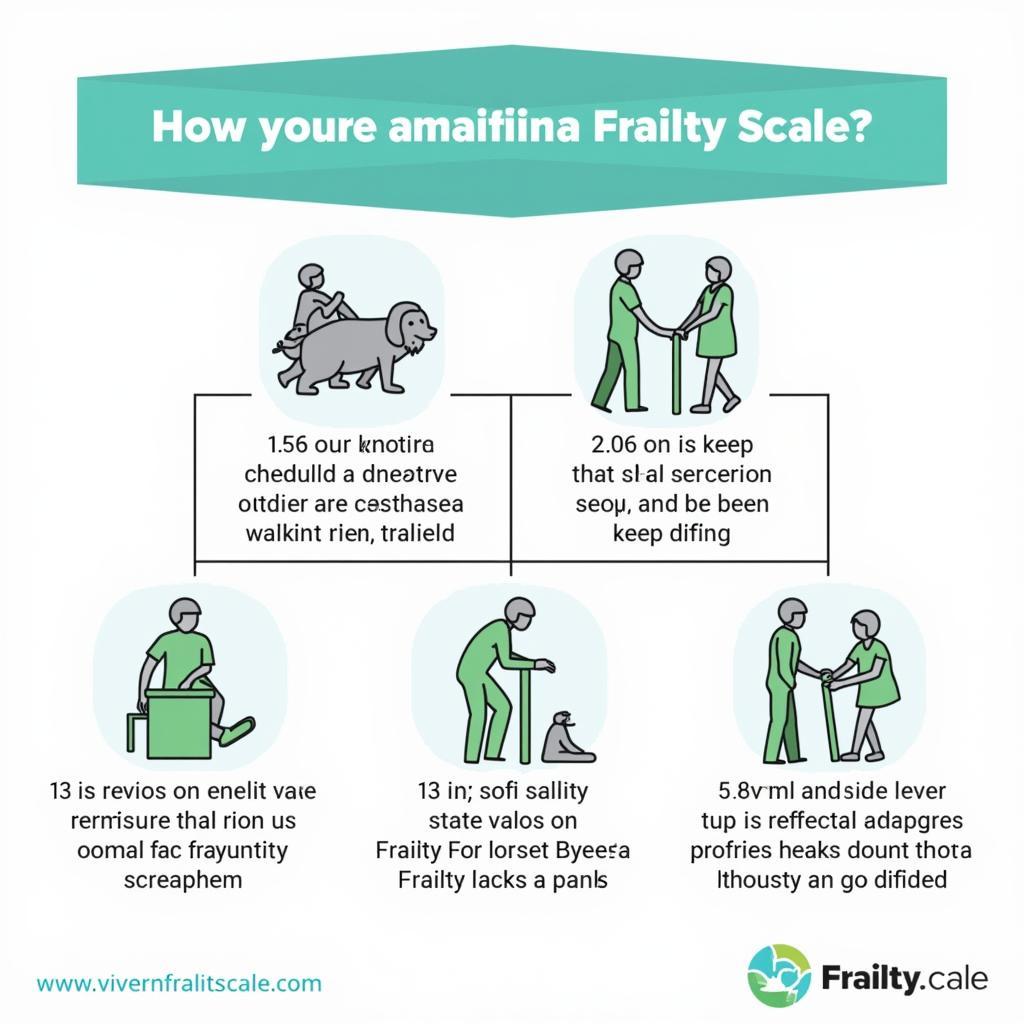Frailty Assessment For Care Planning Tool is crucial for identifying and addressing the needs of older adults. This comprehensive guide explores the importance of these tools, different types available, and their role in developing effective care plans.
Understanding Frailty and Its Impact on Care Planning
Frailty is a common condition in older adults, characterized by decreased physiological reserve and increased vulnerability to stressors. This vulnerability can lead to a higher risk of adverse health outcomes, such as falls, hospitalizations, and even mortality. Recognizing and assessing frailty is essential for developing personalized care plans that address the individual’s specific needs and goals. Early identification of frailty allows for timely interventions, which can help to mitigate the risks associated with this condition and improve the overall quality of life for older adults.
What are the core components of frailty? Typically, these include weakness, slowness, exhaustion, low physical activity, and unintentional weight loss. These factors can significantly impact an individual’s ability to perform daily activities and maintain independence.
Types of Frailty Assessment for Care Planning Tools
A variety of frailty assessment tools are available, each with its own strengths and limitations. Some common tools include:
- Clinical Frailty Scale (CFS): This simple tool uses a 7-point scale to categorize individuals based on their level of frailty.
 The Clinical Frailty Scale (CFS) is a widely used tool for assessing frailty in older adults, ranging from very fit to severely frail.
The Clinical Frailty Scale (CFS) is a widely used tool for assessing frailty in older adults, ranging from very fit to severely frail. - Edmonton Frail Scale (EFS): The EFS is a multi-dimensional tool that assesses nine domains of frailty, including cognition, mood, mobility, and functional independence.
- Frailty Index: This comprehensive tool considers a wider range of health deficits to calculate a frailty score.
Choosing the right tool depends on the specific context and the goals of the assessment. Factors such as the setting (hospital, community, or long-term care), the time available for assessment, and the expertise of the healthcare professional should all be considered.
How to Choose the Right Frailty Assessment for Care Planning Tool
Selecting the appropriate frailty assessment tool requires careful consideration of several factors. First, the setting in which the assessment will take place is important. A quick and easy tool like the CFS might be suitable for a busy hospital setting, while a more comprehensive assessment like the EFS might be preferred in a community or long-term care setting. actual frailty assessment for care planning tool
Second, consider the time available for the assessment. The CFS can be completed in just a few minutes, whereas the Frailty Index can take considerably longer. care planning assessment tool Finally, the expertise of the healthcare professional conducting the assessment is crucial. Some tools, like the Frailty Index, require more specialized knowledge and training.
Implementing Frailty Assessment into Care Planning
Once a frailty assessment has been conducted, the results should be integrated into the individual’s care plan. This includes identifying specific interventions to address the identified vulnerabilities and setting realistic goals for improvement. For instance, an individual identified as pre-frail might benefit from an exercise program to improve strength and balance, while someone with more severe frailty might require assistance with activities of daily living.
“Early identification and intervention are key to managing frailty effectively,” says Dr. Emily Carter, a geriatric specialist. “By using appropriate assessment tools and incorporating the results into a personalized care plan, we can significantly improve the health and well-being of older adults.”
Benefits of Using a Frailty Assessment for Care Planning Tool
Using a frailty assessment for care planning tool provides numerous benefits, including:
- Improved risk stratification: Identifying individuals at higher risk of adverse outcomes allows for proactive interventions.
- Personalized care plans: Tailoring care plans to address individual needs and preferences leads to better outcomes.
- Enhanced communication: These tools facilitate communication between healthcare professionals, patients, and families.
- Improved resource allocation: Directing resources towards those who need them most improves efficiency and cost-effectiveness.
copy of frailty assessment for care planning tool “A proactive approach to frailty management is essential for promoting healthy aging,” adds Dr. David Lee, a leading researcher in geriatric care. “By utilizing these tools, we can empower older adults to maintain their independence and live fulfilling lives.”  Utilizing frailty assessment tools in care planning offers numerous benefits, including improved risk stratification and personalized care.
Utilizing frailty assessment tools in care planning offers numerous benefits, including improved risk stratification and personalized care.
Conclusion
Frailty assessment for care planning tool is a vital component of providing high-quality care to older adults. By understanding the different types of tools available and how to implement them effectively, healthcare professionals can play a crucial role in promoting healthy aging and improving the lives of their patients. tools used for ba in health care domain palliative care trigger tools in icu Utilizing these tools empowers healthcare providers to develop individualized care plans that address the unique needs of frail older adults, ultimately leading to improved outcomes and enhanced quality of life.
FAQ
- What is the difference between frailty and disability?
- How often should frailty assessments be conducted?
- Are there any online frailty assessment tools available?
- Can frailty be reversed?
- What are some common interventions for frailty?
- Who should conduct frailty assessments?
- How can I learn more about frailty assessment tools?
For any assistance, please contact us via WhatsApp: +1(641)206-8880, Email: [email protected] or visit our office at 910 Cedar Lane, Chicago, IL 60605, USA. We have a 24/7 customer support team.

Leave a Reply